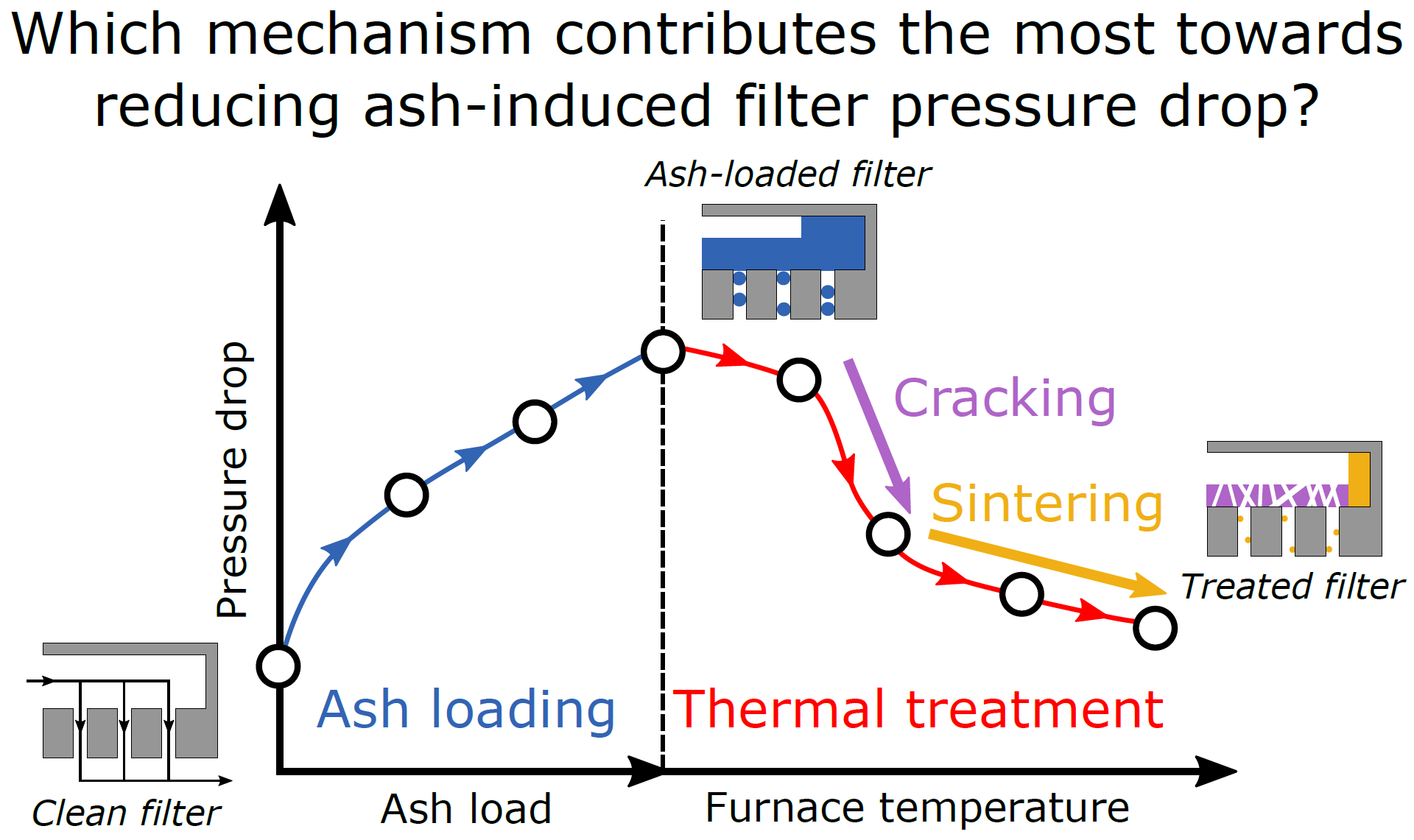Technical Report 259, c4e-Preprint Series, Cambridge
Modelling investigation of the thermal treatment of ash-contaminated particulate filters
Reference: Technical Report 259, c4e-Preprint Series, Cambridge, 2020
- Impact of thermal heating on ash deposits in particulate filters investigated
- Phenomenological model developed to describe sintering and cracking of ash
- Crack formation in ash responsible for substantial reduction in pressure drop
 This paper investigates the impact of thermal treatment on the pressure drop of particulate filters containing ash deposits. A model has been developed and applied to describe the deposition of soot and ash particles, and estimate the spatial distribution of the deposits in such filters. Phenomenological models have been developed to describe the potential sintering and cracking of the ash deposits caused by thermal treatment of the filter. The model results are in good agreement with experimental measurements of the reduction in the pressure drop in thermally treated filters. It was found that crack formation in the ash layer can lead to significant reduction of the pressure drop at relatively low temperatures. Sintering of ash deposits in the wall and the ash plug also contributes towards a decrease in filter pressure drop at higher temperatures. This work is the first attempt to model the impact of the thermal treatment of ash in particulate filters in order to support the development of future ash management strategies. The cracking of the ash layer during the thermal treatment has been identified to be the most critical effect for pressure drop reduction.
This paper investigates the impact of thermal treatment on the pressure drop of particulate filters containing ash deposits. A model has been developed and applied to describe the deposition of soot and ash particles, and estimate the spatial distribution of the deposits in such filters. Phenomenological models have been developed to describe the potential sintering and cracking of the ash deposits caused by thermal treatment of the filter. The model results are in good agreement with experimental measurements of the reduction in the pressure drop in thermally treated filters. It was found that crack formation in the ash layer can lead to significant reduction of the pressure drop at relatively low temperatures. Sintering of ash deposits in the wall and the ash plug also contributes towards a decrease in filter pressure drop at higher temperatures. This work is the first attempt to model the impact of the thermal treatment of ash in particulate filters in order to support the development of future ash management strategies. The cracking of the ash layer during the thermal treatment has been identified to be the most critical effect for pressure drop reduction.
Material from this preprint has been published in Emission Control Science and Technology.
PDF (5.5 MB)



